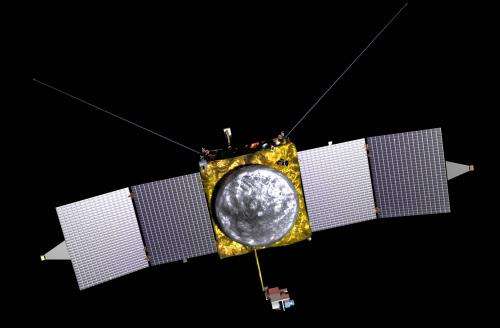Sputtering: How mars may have lost its atmosphere

Why is Mars cold and dry? While some recent studies hint that early Mars may have never been wet or warm, many scientists think that long ago, Mars once had a denser atmosphere that supported liquid water on the surface. If so, Mars might have had environmental conditions to support microbial life. However, for some reason, most of the Martian atmosphere was lost to space long ago and the thin wispy atmosphere no longer allows water to be stable at the surface. Scientists aren't sure how or why this happened, but one way a planet can lose its atmosphere is through a process called 'sputtering.' In this process, atoms are knocked away from the atmosphere due to impacts from energetic particles.
Since Mars doesn't have a strong intrinsic magnetic field, the atmosphere could have been eroded by interactions with the solar wind, and this video shows how that occurs. Also, the conditions in the early solar-system conditions enhanced the sputtering loss, and so the loss of Martian atmosphere could be caused by a complex set of mechanisms working simultaneously.
An upcoming mission could tell us what happened to Mars' atmosphere. The Mars Atmosphere and Volatile Evolution spacecraft or MAVEN is equipped with eight different sensors designed to sort out what happened to the planet's atmosphere.
MAVEN will be the first spacecraft ever to make direct measurements of the Martian atmosphere, and is the first mission to Mars specifically designed to help scientists understand the past – also the ongoing—escape of CO2 and other gases into space. MAVEN will orbit Mars for at least one Earth-year, about a half of a Martian year. MAVEN will provide information on how and how fast atmospheric gases are being lost to space today, and infer from those detailed studies what happened in the past.
Studying how the Martian atmosphere was lost to space can reveal clues about the impact that change had on the Martian climate, geologic, and geochemical conditions over time, all of which are important in understanding whether Mars had an environment able to support life.
The MAVEN will carry eight science instruments that will take measurements of the upper Martian atmosphere during one Earth year, equivalent to about half of a Martian year.
MAVEN is scheduled to launch in 2013, with a launch window from Nov. 18 to Dec 7, 2013. Mars Orbit Insertion will be in mid-September2014.
Source: Universe Today





















